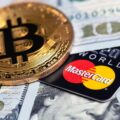average investment > Navigating the NFT Landscape: A Comprehensive Guide to Succeeding in the Digital Art Market
Navigating the NFT Landscape: A Comprehensive Guide to Succeeding in the Digital Art Market
The Rise of NFTs: Transforming the Digital Art Landscape
The advent of blockchain technology has ushered in a new era of digital asset ownership, marked by the emergence of Non-Fungible Tokens (NFTs). These distinctive digital assets have redefined the art industry, offering creators and collectors an innovative way to connect and transact. The digital art market, in particular, has found fertile ground in NFTs as artists increasingly embrace this revolutionary model to monetize their creations.
Whether you’re a digital artist, collector, or an NFT company, a comprehensive understanding of this burgeoning market is crucial. The rapid ascent of the NFT market has not only disrupted traditional art markets but has also attracted investors, celebrities, and innovators. Despite its volatility, the growth potential and allure of NFTs remain unparalleled.
This meteoric rise is a result of various factors, including the surge in digital art trends, the widespread acceptance of cryptocurrency, and the inherent appeal of owning a unique piece of digital art. These factors have contributed to the thriving digital art market, making NFT success strategies a vital component of the broader digital marketing landscape.
Understanding the Concept of NFTs
At its core, an NFT is a digital asset representing ownership or proof of authenticity for a unique item or content, utilizing blockchain technology. Unlike fungible cryptocurrencies such as Bitcoin or Ethereum, NFTs are non-fungible and cannot be exchanged on a like-for-like basis.
The uniqueness of NFTs is derived from the metadata they carry, defining attributes like the artist’s name, the artwork’s history, or the owner’s identity. NFTs tokenize digital art, creating a digital certificate of ownership that can be bought, sold, and traded on various NFT platforms.
NFT and Blockchain: The Inseparable Connection
Role of Blockchain in NFTs
The foundation of NFTs rests on blockchain technology, serving as an immutable, transparent, and secure digital ledger that records transactions across multiple computers. This ensures the authenticity and provenance of NFTs, fostering trust and security for both buyers and sellers.
Blockchain enables the individual uniqueness and verifiability of NFTs, establishing a direct link between creators and owners. Its transparency ensures clear provenance, allowing everyone to view the ownership history of an NFT. Blockchain has revolutionized the art world by providing a solution to the age-old issue of art forgery, creating an unforgeable record of ownership for tokenized artworks.
Moreover, blockchain facilitates the use of smart contracts, self-executing contracts with terms written into code. In the context of NFTs, smart contracts can define rules like royalty payments for artists, triggered with every NFT transaction. The decentralization aspect ensures an open and democratic environment, encouraging global participation in minting and selling NFTs.
Ethereum and NFTs: ERC-721 and ERC-1155
The Ethereum blockchain has played a pivotal role in the NFT movement, thanks to its smart contract functionality. Most NFTs are minted using Ethereum’s ERC-721 standard, allowing each token to carry unique attributes. ERC-721 tokens are crucial for ensuring the uniqueness and scarcity of digital art.
An evolution from this standard is ERC-1155, the “multi-token” standard, allowing a single contract to govern an infinite number of tokens, both fungible and non-fungible. This flexibility enables creators to mint multiple editions of their artwork under a unique NFT.
Understanding the differences between ERC-721 and ERC-1155 is essential for anyone planning to mint an NFT, impacting the success of NFT projects. An experienced NFT marketing agency can provide guidance on these complexities, ensuring informed decisions for NFT initiatives.
Importance of Smart Contracts
Smart contracts, as self-executing agreements written into code, play a dual role in the NFT space. They define ownership rules and enable features like royalty payments, ensuring artists benefit from secondary sales. NFT marketing strategies should include leveraging smart contracts for added functionality and value.
Exploring Key NFT Platforms
OpenSea
As the world’s largest NFT marketplace, OpenSea offers a diverse range of digital assets, from art to virtual goods. Operating on the Ethereum blockchain, OpenSea provides a user-friendly interface and robust features, making it a go-to platform for NFT enthusiasts. Artists and NFT companies can leverage OpenSea’s powerful search engine, requiring an understanding of NFT SEO for optimal asset discoverability.
Rarible
Known for its creator-centric approach, Rarible is a community-owned NFT marketplace. Its governance token, RARI, allows users to influence platform decisions. Supporting both ERC-721 and ERC-1155 token standards, Rarible emphasizes community engagement, making it an ideal venue for NFT projects focusing on interaction.
Decentraland
Decentraland is a decentralized virtual reality platform on the Ethereum blockchain, enabling users to create, experience, and monetize content. Unique to Decentraland is the ability to buy and sell virtual land as NFTs, making it a virtual economy. NFT marketing in Decentraland requires a focus on virtual experiences and interactions.
Other Emerging Platforms
Beyond OpenSea, Rarible, and Decentraland, emerging platforms like Mintable, KnownOrigin, Nifty Gateway, SuperRare, and Foundation contribute to the expanding NFT landscape. Each platform offers unique features and caters to diverse NFT preferences. Choosing the right platform requires careful consideration and understanding of their dynamics.
Minting NFTs: A Step-by-step Process
Creating Digital Assets
The initial step in minting NFTs involves creating a unique digital asset, whether art, music, virtual items, or domain names. Originality is paramount for credibility and reputation building in the NFT space.
The Minting Process and Costs
Minting an NFT transforms a digital asset into a blockchain token, involving uploading the asset, filling in metadata, and creating the NFT. This process varies across platforms, requiring a digital wallet (like Metamask) and Ethereum to cover minting fees (gas fees). Planning for these costs is vital, considering their fluctuation based on Ethereum network congestion.
Understanding Gas Fees
Gas fees, transaction fees paid to miners, are integral to the Ethereum ecosystem. While fluctuating, artists can strategize minting during periods of lower network demand to reduce fees. Professional NFT marketing agencies assist in navigating these dynamics for effective planning and launch.
Buying and Investing in NFTs
NFT Buying Guide
Buying NFTs involves setting up a digital wallet, researching the intended purchase, and completing transactions on marketplaces. Metamask, an example of a digital wallet, integrates seamlessly with most NFT platforms, simplifying the buying process. Research tools like NonFungible.com aid in understanding market trends and pricing.
NFT Investing Strategies
NFT investments require diversification, research, and an understanding of community dynamics. Diversifying across NFT types, artists, and platforms mitigates risks. Researching market trends, artist reputation, and NFT rarity provides insights into potential value. Strong and active communities contribute to an NFT’s long-term value. Professional guidance in NFT investing is crucial for navigating this evolving field.
Managing Investment Risks
NFT investments carry risks, including volatility, fraud, and legal nuances. Verification of authenticity and purchase from reputable marketplaces are essential. Safeguarding digital wallets is critical to prevent NFT loss or theft. Professional tools and guidance aid in managing these risks effectively.
Predicting NFT Market Trends
Predicting NFT market trends involves staying informed about technological advancements, cultural shifts, and community engagement. Integration of NFTs into gaming and virtual realities, fractional NFT ownership, and regulatory developments are notable trends. Monitoring broader cryptocurrency trends also influences the NFT space. Professional NFT marketing agencies offer data-driven insights and strategies to stay ahead of market trends.
In conclusion, navigating the NFT landscape requires a holistic understanding of blockchain, NFT standards, smart contracts, and key platforms. Minting NFTs demands originality, technical proficiency, and strategic planning for associated costs. Buying and investing in NFTs necessitate research, diversification, and professional guidance to manage risks effectively. Predicting market trends involves staying informed and leveraging professional insights. As the NFT space continues to evolve, informed strategies and collaborations with experienced agencies become indispensable for success.




